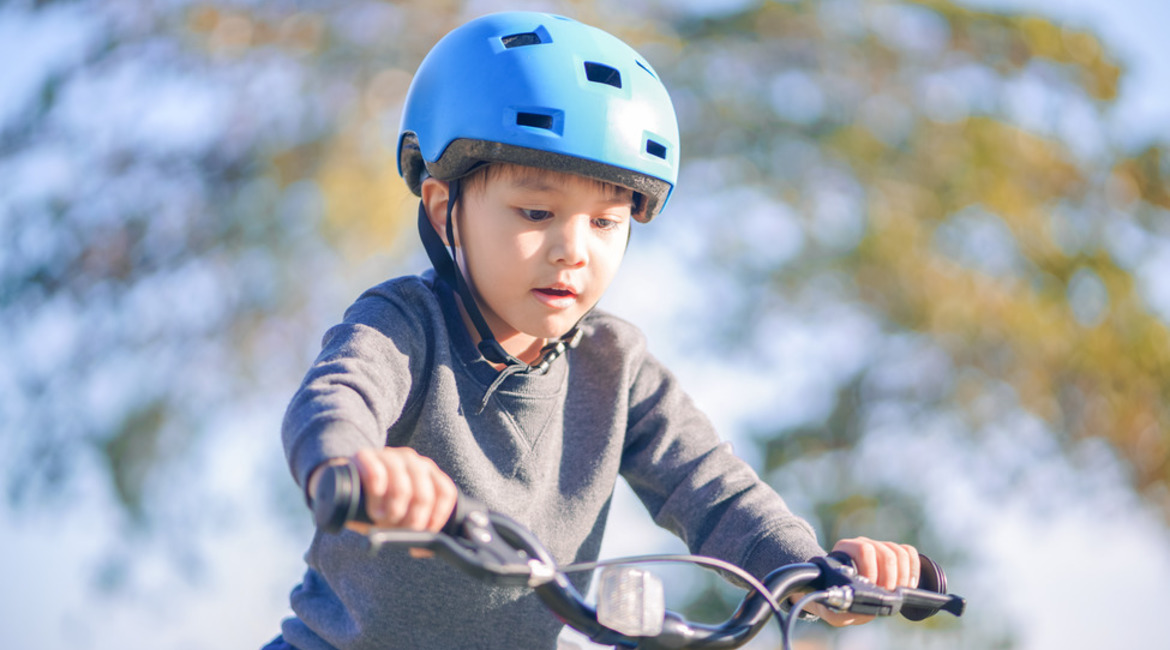There is no doubt the benefit of using a helmet when your toddler is partaking in rigorous activities.
Although most children activities are generally safe, the occasional falls are inevitable, especially if your toddler is learning the ropes of the activity.
Hence, toddlers need to use a helmet every time while cycling, roller-skating, or any activity requiring its use.
Why Should Toddlers Wear a Helmet?
When it comes to cycling without assistance, from 18 months, toddlers are ready for balance bicycles.
And by three years, they can upgrade to small bikes with training wheels.
Irrespective of the pedal your child uses, wearing a helmet is of utmost importance. Using a helmet on your little one can save their life.
Using a helmet decreases babies risk of head injury by at least 85%.
Also, note that most cycling-related injuries involve a rider’s head and face, which makes using a helmet essential for safety.
It is an essential item in reducing their chances of severe brain injury resulting from children falling from their bicycle.
Helmets are one of the most vital things to buy to protect your toddler’s skull and developing brain when cycling.
The good news is that a properly fitted helmet reduces the risk of brain injury and other mishaps.
Hence the need to purchase a toddler’s helmet that fits instead of saving cost by opting for a helmet your child will “grow into.”

Steps to Follow When Choosing a Toddlers Helmet
It is not enough for your child to wear a helmet; it needs to be appropriately fitted to provide the optimum head protection it was designed to do!
Most activities that require helmets, such as cycling, is usually a rite of passage for children.
But with the high number of children dying every year from head injuries sustained from cycling, parents have to pay attention to helmet sizes and safety.
Toddlers helmets shouldn’t flop around but rather stay firmly on their head, even when your baby is on the move!
Luckily choosing a perfect helmet is easy to get right if you follow the ultimate guide listed below.
1. The Helmet Size
Any helmet you choose must fit your child’s head. If it is loosely fit, it cannot protect your toddler.
Since few helmets are available small enough for toddlers, measure your child’s head before purchasing.
You can either use a tape rule or, more preferably, the measurements given by their paediatrician at regular check-ups.
Whichever helmet you choose, ensure that it is snugly fitted on your toddler’s head.
Resist the urge to choose a size up because it is unsafe for riding if it is too big.
2. The Weight
Lighter helmets are the better option for toddlers because their neck muscles are very tender.
Therefore, one of the most crucial factor to consider when purchasing helmets is what it weighs.
Their tiny neck is already working to support the weight of their head, so the additional weight of heavy helmets gives their neck muscles extra work to do.
The less it weighs, the less pressure on the toddler’s head and necks.
Many babies refuse to wear helmets usually because it is heavy or loosely fit. In other words, it is uncomfortable for them.
3. Adjustability
It would be best if you chose helmets with a dial or auto-adjust system on the back, making it easier to tighten the inner portion of the helmet for a perfect fit.
Adjusting children’s helmet can result in severe pain for them. The pain occurs because it is usually hard to turn the strap while a toddler is wearing the helmet.
However, the best option is a strap-free helmet.
Newly-made helmets now feature a magnetic “pinch-free” buckle to prevent the chances of having the neck skin stuck between the helmet buckle.
4. Ventilation
Consider what your child wants to use the helmet for before buying. If it is for riding a bike, get one with good ventilation.
Ensure that the helmet comes with plenty of vent holes because smaller sized ones are notorious for having poor ventilation.
Ventilation is essential if your toddler is cycling without assistance on a balance or pedal bike.
However, if they are not riding but just seated on the bike seat, this is less critical.
Air vents are vital because they ensure your child is not drenched in sweat after their bike ride.
5. Safety
Always check the licensed safety sticker inside the helmet.
The Consumer Product Safety Committee (CPSC) sticker guarantees that the helmet will offer a high level of protection if there is any impact.
Other labels or stickers to check out for are “ASTM,” “ANSI,” and “Snell”. Most importantly, a high cost does not guarantee its safety.
Nevertheless, if you want the extra measure to ensure your toddler has maximum protection, you can also choose a helmet with MIPS technology.
MIPS provides an additional protective layer to limit the rotational force to your child’s head if there is a possible event of an impact.
Also, the protection your toddler gets from an inexpensive helmet is as good for impact protection as a more expensive helmet.
How to Encourage Your Toddler to Use Helmets
Do you have trouble getting your children to use their helmets or to keep them on at all times while riding a bicycle?
Here are three tips to encourage your toddlers to use helmets:
1. Start Early
When children start using their helmets early, they tend to make it a habit. All bike riders are expected to use a bicycle helmet, and toddlers are not exempted.
2. Allow Toddlers Participate in the Buying Process
As long as the helmet is snugly fit, allow your toddler to pick out their helmet. Giving them the choosing power makes them eager to wear it.
3. Set an Example
To encourage kids to put on helmets, their parents should wear one themselves while cycling. Toddlers are eager to copy people they look up to, so they will do the same.
Conclusion
No game or cycling activity is worth risking your toddler’s safety!
As a parent, you need to be confident that any helmet you choose is doing the perfect job of protecting your toddler’s head.
Whether the helmet is for biking, skateboarding, or roller skating, always look for helmets specifically designed to meet the safety standard of the sport.


